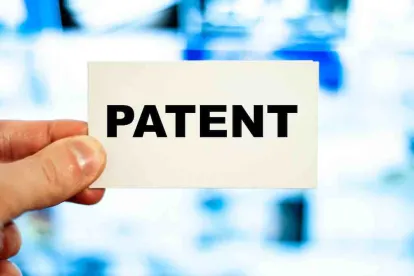The Patent Trial and Appeal Board (PTAB) is an administrative law body of the US Patent and Trademark Office (USTPO) that determines disputes over the issuance, reissuance, and cancellation of patent claims. The PTAB has become well known to patent litigants since the implementation in 2012 of new proceedings, including Inter Partes Review (IPR), for challenging the patentability of issued patent claims.
The Design and Use of IPRs
IPRs were designed to be an alternative to litigation and are initiated with an IPR petition, which must be filed with the PTAB within one year of service of a corresponding infringement action. A petition outlines the grounds for the alleged unpatentability of specified claims in the patent. A panel of three administrative law judges evaluates the petition and any preliminary response of the patent owner, and then decides, within six months of the petition’s filing, whether to institute an IPR of the challenged claims. If an IPR is instituted, the petitioner and the patent owner are allowed to submit additional arguments and evidence for consideration. Unless there is good cause for an extension of time, a final written decision will then issue within twelve months of institution.
IPRs are often initiated by patent infringement defendants, for several reasons. IPRs are resolved more quickly than litigation in all but a few courts. They only address patent validity under 35 U.S.C. §§ 102 and 103, and offer advantages to the challenger over litigating these issues in district court. The challenger’s burden of proof is a preponderance of evidence, compared to the higher standard of clear and convincing evidence in district court. In addition, IPR proceedings are highly structured and, unlike in district court, discovery is limited. Consequently, IPRs are less expensive and are viewed favorably by patent challengers relative to litigating anticipation and obviousness issues in a district court — at least historically.
Statistical Trends in IPR Institution and Outcomes
In the early years after 2012, IPRs were likely to invalidate at least some and often all of the challenged patent claims. Even after the tide began to turn, as of 2014 the PTAB instituted IPRs on over 75% of petitions, and in over 75% of those instituted IPRs, the PTAB held all challenged claims unpatentable and cancelled them. As a result, the former Chief Judge of the Federal Circuit Rader branded the PTAB the “patent death squad.”
In 2015, institution rates dropped below 70% for the first time, and IPR institution and claim cancellation rates have steadily declined since then. In fiscal year 2020, the PTAB instituted IPR for only 56% of petitions, and cancelled all challenged claims in only 60% of instituted IPRs. Recent liberalizing of claim amendment practice has provided another avenue for patentees to overcome the challenges presented in an IPR. Thus, IPRs no longer appear to be the quick and assured way to kill patent claims. Some would say that the IPR playing field has been leveled and the process made more fair to patent owners.
Legal Foundations for PTAB Discretionary Denials
The changes in institution and outcomes of IPRs stem in part from the Supreme Court’s 2018 decision in SAS Institute, Inc. v. Iancu. The Court held that the PTAB could not “pick-and-choose” the claims and grounds on which it would institute an IPR. Rather, any IPR had to be instituted on all or none of the challenged claims and grounds. Requiring assessment and institution of the petition as a whole affords the PTAB more flexibility to deny institution of marginal petitions, and it may have lead the PTAB to cancel all reviewed claims less often.
The changes also arise, indirectly, from the Supreme Court’s 2016 decision in Cuozzo Speed Techs., LLC v. Lee. Relying on 35 U.S.C. §314(a), which provides that the USPTO “may not authorize an IPR . . . unless” it makes certain findings, the Court found “no mandate to institute review.” The Court concluded that institution decisions could not be appealed because “the agency’s decision to deny a petition is a matter committed to the Patent Office’s discretion.” In other words, the PTAB could refuse to institute IPR for any reason. The PTAB has put this authority to use to protect its interests and patent owners’ alike in several ways.
PTAB Rulemaking on Discretionary Denials
Since Cuozzo, the PTAB has increasingly relied on its authority to issue “discretionary denials.” In 2016, the PTAB denied institution based on 35 U.S.C. §314(a) alone for just a few petitions. Such denials have increased exponentially since then, with over 80 petitions denied in 2019 based on this discretionary authority, and over 160 denied in 2020. This increase has been fostered by the PTAB’s development of precedents for consideration of “serial petitions” and “parallel petitions” and, most recently, proceedings in other tribunals.
In 2017, the PTAB exercised its authority to deny “serial” petitions filed by the same petitioner, designating part of its decision in General Plastic Ind. Co., Ltd. v. Canon Kabushiki Kaisha as precedential. This decision outlines seven factors the PTAB will consider when deciding whether a petition should be denied in view of a petition previously filed on the same patent claims—whether by the same petitioner or another. When the prior petition was filed by the same petitioner, especially if the patent owner already provided its preliminary response to the prior petition, or where a long time elapsed since filing the prior petition without good explanation, denial of institution of the later petition is favored.
In 2019, the PTAB asserted its authority to deny “parallel” petitions against the same patent, whether by the same or a different petitioner. It updated the PTAB’s Trial Practice Guide to set forth its expectation of only one IPR per patent. The update acknowledges that two IPRs occasionally may be needed, but states that three or more IPRs on the same patent are unlikely to be instituted. The update also requires that a petitioner submitting multiple petitions rank them by priority, and explain how they differ, why that matters, and “why the Board should exercise its discretion to institute additional petitions.”
Discretionary Consideration of Actions in Other Tribunals
Also in 2019, the PTAB designated its decision in NHK Spring Co. Ltd. v Intri-Plex Techs. Inc., as precedential. This decision addresses the factors used to deny institution under 35 U.S.C. §325(d) when prior art or arguments were already considered during prosecution. However, it also considers, under 35 U.S.C. §314(a), whether similar art and arguments are being presented in co-pending litigation that would conclude soon.
In May 2020, the PTAB substantially expanded its considerations of co-pending district court litigation, designating its decision in Apple Inc. v Fintiv, Inc. as precedential. In that case, the patent owner argued against institution of IPR “due to the advanced state of a parallel district court litigation,” where a trial was set to occur before issuance of the PTAB’s final written decision. The PTAB affirmed that this situation could support a discretionary denial of institution because it serves the “efficiency and integrity” of the IPR system.
This decision provides six “Fintiv” factors the PTAB will consider when co-pending litigation exists. A few general principles emerge from these factors. When the district court litigation is likely to be stayed and/or the merits of the petition are quite strong, discretionary denial is not favored. But when the parties and issues overlap, a heavy investment has been made to litigate those issues, and/or where a trial is set for long before the decision date, discretionary denial is favored even when the petition was timely filed.
The impact of this practice change cannot be overstated. In 2020, the Fintiv factors were used to deny institution of 85 petitions — almost half of the discretionary denials under Section 314(a).
Public Reaction to the Fintiv Rule
The public reaction to the Fintiv rule — and more generally the PTAB’s discretionary denial of IPRs in view of co-pending litigation — was swift and polarized. Some companies, including Johnson & Johnson and 3M, expressed support for the Fintiv rule, but IT companies strongly opposed it.
In August 2020, Apple, Cisco, Google, and Intel filed a lawsuit against the USPTO’s then Director Andrei Iancu, alleging that the Fintiv “rule” violates the America Invents Act because (i) the Act already establishes a limit on when an IPR petition can be filed, and (ii) the rule is arbitrary and capricious. The USPTO moved to dismiss the lawsuit as administratively improper and a hearing was held on March 11, 2021, but a decision has not yet issued.
Some petitioners have appealed denials based on Fintiv assessments, and a few filed a mandamus petition. The Federal Circuit has confirmed that there is no direct avenue for appeals from decisions denying institution of IPR. In a decision issued March 12, 2021, the Court held it could address such issues by way of its mandamus authority, but declined to grant the mandamus petitioner’s request for relief under the high standards for mandamus relief.
In October 2020, the USPTO issued a request for public comment. It received over 800 comments expressing a diversity of views, mostly supporting some exercise of discretion, as summarized in its January 2021 report. Whether the USPTO will promulgate further and/or different rules relating to discretionary denials remains to be seen.
However, in December 2020, the PTAB designated as precedential two opinions relating to discretionary denials involving co-pending litigations. As discussed separately, the PTAB’s decisions are a sign to Courts that pre-institution stays of litigation will reduce the likelihood of a discretionary denial, as will a Petitioner’s stipulation that it will not pursue in litigation any ground raised or that could have been reasonably raised in the IPR.
Takeaways
Taken as whole, the PTAB’s recently developed guidelines for discretionary denials have ameliorated the perceived inequity associated with IPRs, as they tend to favor patent owners and raise the bar for institution. Its recent efforts to balance the interests of petitioners in instituting IPRs against patent owner’s interests in proceeding instead in co-pending litigation may go too far, even if intended to enhance the patent system as a whole. At the same time, its authority and guidelines for denial of potentially meritorious petitions should cause petitioners to better focus and limit the number of IPR petitions that they file. It should also cause them to consider the timing of the petition filing date in view of the trial date set for the co-pending litigation.




 />i
/>i
